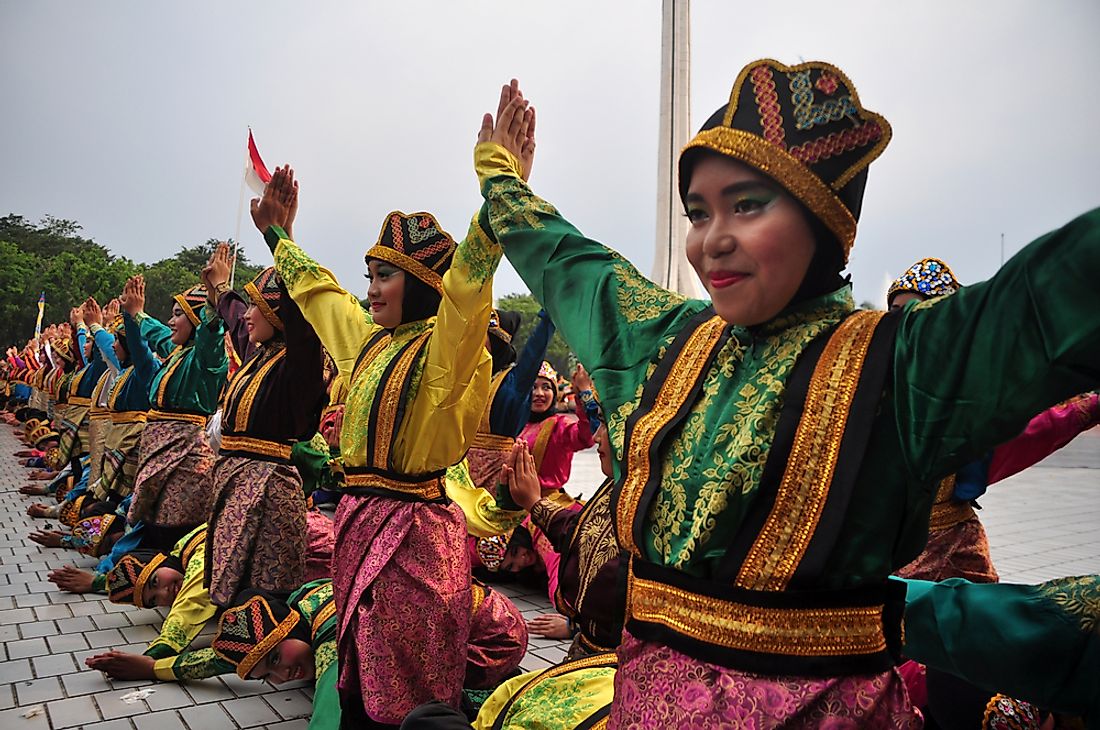UNESCO-Recognized Elements Of Intangible Cultural Heritage Of Indonesia

Indonesia has a rich culture and heritage that is well-preserved and protected by the people of the country. In this article, we have mentioned some of the elements of the intangible cultural heritage of Indonesia that have been recognized by the UNESCO. They are as follows:
8. Saman Dance
The Gayo people of Aceh, Sumatra, perform the Saman dance. The dance is performed by young men or boys wearing black costumes with colorful Gayo motifs. The leader of the troupe sits in the middle and sings verses in the Gayo languages while the rest start dancing. The verses can be of religious, humorous or romantic nature. The Saman dance performances provide a glimpse into the lives and culture of the Gayo people.
7. Indonesian Kris
The kris is a unique, asymmetrical dagger made only in Indonesia. The dagger is used both as a weapon and a spiritual symbol in the country. It has been used for centuries in Indonesia. The dagger has a sheath that is usually made of wood. The blades are narrow and have a wide, asymmetrical base. Metal decoration on the blade of the kris lends aesthetic value to it. The process of making kris is highly time-consuming and requires great craftsmanship. A rich history and spirituality are associated with this dagger. In many families, a kris is treated as a family heirloom and handed down generations. The dagger has often been associated with social status, heroism, magical power, etc.
6. Wayang Puppet Theatre
It is an ancient form of storytelling using puppets and complex musical styles that are even practiced today. This performing art form originated in Java. For centuries, it was highly popular in the royal courts of Java and Bali. The puppets used are handcrafted and are of two main types, the 3-D wooden puppets, and the flat leather shadow puppets. Gamelan drums and bronze instruments are used to play melodies during the show. The puppet show is used for not only entertainment but also for spreading messages on social and political issues.
5. Indonesian Batik
Any type of textile or garment of Indonesian batik is a must buy for tourists visiting the country. It involves the technique of hand-dying cotton and silk garments. Batik plays an integral role in the lives of Indonesians. Children are carried in batik slings featuring symbols of luck. Even the dead are shrouded in funerary batik. Clothes of batik are also worn in everyday life by the people of the country. Batik garments are also worn on specific rituals and ceremonies.
4. Indonesian Angklung
The Angklung is a traditional Indonesian musical instrument. A bamboo frame is used to suspend two to four bamboo tubes that are bound with rattan cords. The tubes are carefully crafted to produce different notes when the frame holding them is tapped or shaken. Several players of this musical instrument perform together to produce melodies. The knowledge of this form of music is passed down orally from one generation to the next.
3. Three Genres Of Traditional Dance In Bali
Traditional Balinese dance comes in three genres, that meant for pure entertainment, sacred, and semi-sacred. The dancers include both males and females. They are decked up in colorful traditional clothes with golden floral and faunal motifs. The dances symbolize Balinese culture, religious beliefs, and elements of nature. Children in Balinese households are usually informally trained in these dance forms. It helps to preserve and protect the traditional beliefs and culture of the people.
2. Pinisi
This intangible Indonesian heritage is the Art of Boatbuilding in South Sulawesi. It is a special type of boat made in the country and is known as the ‘Sulawesi schooner’. The techniques have been developed over centuries of Austronesian history. Several centers of boatbuilding are dispersed across the country. Some of the biggest of these centers are are Bira, Tana Beru, and Batu Licin. In these places, more than a majority of the population depend on navigation and boatbuilding for a living. The knowledge and skills of Pinisi are passed down through generations of the family circle.
1. Noken
The noken is a handicraft made in the West Papua and Papua provinces of Indonesia. It is a woven or knotted net bag that is made of leaves or wood fiber. The locals use these bags for a wide variety of purposes like carrying plantation produce, babies or small animals, for home storage, shopping, etc.











